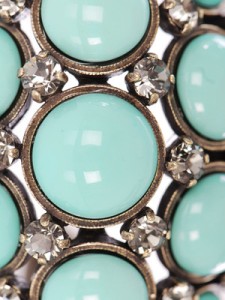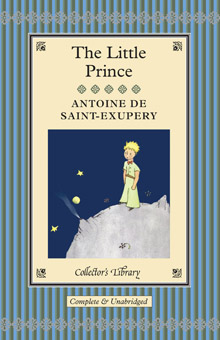Is our competition giving you brain-ache? Here’s a clue to question 1: it’s in the colours (the red might be a touch on the orange side, opinions differ as to the original).
For question 2, you’ll have to search the November posts.
By Marian Dougan
A blog about translation, writing and language in all its glorious aspects
Is our competition giving you brain-ache? Here’s a clue to question 1: it’s in the colours (the red might be a touch on the orange side, opinions differ as to the original).
For question 2, you’ll have to search the November posts.
By Marian Dougan
As I’ve been putting together the last few posts on books as Christmas gifts, it’s been a lovely surprise to discover so many publishing houses specialising in their own niche markets or in helping little-known authors get published. Sparkling Books:
are publishers of non-fiction and fiction.
Our series are:
- Sparkling Perspectives – non-fiction
- Sparkling Imaginations – fiction
- Sparkling Revivals
Our aim is to give a voice to quality writing by authors ignored by larger publishers. We welcome new authors who have something worth saying and can say it well. But, above all, we want to give good new authors the chance of seeing their book in print.
In the Revivals category, Sparkling has recently published Carlo Goldoni’s The True Friend, in the original Italian version with the English parallel translated text. In his memoirs, Goldoni described the play as one of his favourites. The translation, by Anna Cuffaro,
has been acclaimed by Goldoni academics for brilliantly preserving the rhythm, humour and the fast pace typical of Goldoni’s dialogue.
This publication would make a great gift for students of Italian/English, for students of Goldoni and Italian theatre, or for theatre-lovers. Or for a true friend.
I lived in Italy for over 20 years, but the only recollection I have of seeing a Goldoni play performed was here in Glasgow, at the Citizens Theatre, during the glory years (more than 30 of them!) of the Triumvirate (Giles Havergal, Philip Prowse and Robert David MacDonald). Robert worked as a translator before moving to the Citz, where he translated several of Goldoni’s plays for the company. You can read more about his work on his Doollee page (what a fantastic resource!).
Wouldn’t it be lovely to see some enterprising theatre company stage The True Friend, or to see it used as a text book in schools’ Italian departments (are there any left)?
By Marian Dougan
 We’re delighted to announce a competition open to all readers. All you have to do is:
We’re delighted to announce a competition open to all readers. All you have to do is:
1) guess which book I’ll be featuring in my post of Wednesday 15 December, and
2) tell me the name of the book featured last month (November) on this blog that is part of a charity initiative, and which charity it supports.
The winner will be selected at random from answers (correct ones, naturally!) submitted no later than mid-day of Wednesday 15 December 2010 (UK time) via the comments or by email. The prize will be a package containing books featured on this blog (the mystery charity book, plus a book chosen from Peirene Press, Hersilia Press or Sparkling Books).
There is no truth in the rumour that comments heaping praise upon the sheer awesomeness of this blog will be favoured over others.
Boy, didn’t he have style in his heyday!
The images show details of jewellery by Lanvin, available from Net-a-Porter and Matches.
By Marian Dougan
For those of you looking for Christmas books for children, two new translations of Antoine de Saint-Exupéry’s “The Little Prince” have just been published.
The one shown above is a sort of double translation, as it’s a graphic adaptation by Joann Sfar with translation by Sarah Ardizzone. It’s published by Walker Books (who really should credit the translator, tsk, tsk).
 Ros Schwartz’s translation is from the original version. It’s published by The Collector’s Library (who do mention her name – so kudos to them!).
Ros Schwartz’s translation is from the original version. It’s published by The Collector’s Library (who do mention her name – so kudos to them!).
“The Little Prince” isn’t just for children, of course. I read it when I was at university, and now that it’s available in graphic form too its appeal will be wider still.
Writing in “The Blog at the Crossroads“, Paul Gravett, who works in comics publishing and promotion, had this to say about Ros and Sarah’s new translations:
“Translation is an underappreciated art [love you, Paul] and, having done a few comics translations myself for Escape Magazine, I know these sensitive wordsmiths deepened my admiration greatly”.
For those of you who read French, here’s the official website of Antoine de Saint-Exupéry. And here’s the Wikipedia Saint-Exupéry page, for those of you who don’t.
By Marian Dougan
Earlier posts this week were about books in translation and books designed by Coralie Bickford-Smith.
Coralie also designed Penguin’s Limited Edition Clothbound Classic version of The Arabian Nights, translated by Malcolm Lyons with his wife, Ursula Lyons. The Limited Edition version is no longer available (unless you have over £600 to spend on Amazon). But the edition shown above is now available from Penguin.
For those of you interested in the translation, as well as the lovely cover, here’s an excerpt from James Buchan’s review in the Guardian, from December 2008, of the limited edition publication:
English translations were made by Edward William Lane (from Bulaq), and John Payne and the traveller and explorer Sir Richard Burton from Calcutta II. The translations by Lane and Burton are laden with ethnographic commentary of truly 19th-century character. Whereas Galland was interested (like his readers) in improving tales of virtue and sentiment in a commercial setting, Lane expounds on costume and burial customs and Burton on the African penis. (Partly to keep clear of the Obscene Publications Act, Burton printed his 16 volumes in 1885-87 for private subscription.)
The Lyons have also used for their translation Calcutta II. I can best recommend these volumes by way of a comparison with Sir Richard Burton. Here is the old reprobate attacking a difficult passage in “The porter and the three ladies”:
“Behold, there stood before him an honourable woman in a mantilla of Mosul [footnote] silk, broidered with gold and bordered with brocade; her walking shoes were also purfled with gold and her hair floated in long plaits. She raised her face veil [footnote] and, showing two black eyes fringed with jetty lashes, whose glances were soft and languishing and whose perfect beauty was ever blandishing, she accosted the Porter and said in the suavest tones and choicest language, ‘Take up thy crate and follow me.'”
Here is the same passage in the Lyons’ translation:
“A woman came up to him wrapped in a silken Mosuli shawl with a floating ribbon and wearing embroidered shoes fringed with gold thread. When she raised her veil, beneath it could be seen dark eyes, which, with their eyelashes and eyelids, shot soft glances, perfect in their quality. She turned to the porter and said in a sweet, clear voice: ‘Take your basket and follow me.'”
The improvements are clear. The Biblical language in Burton, with its ludicrous echo of the Pool of Bethesda (“Take up thy crate”) has gone, along with the superfluous Latinising (“mantilla” for shawl) and the faerie English (“purfled”). Gone too is any attempt to reproduce the Arabic rhyming prose known as saj (“broidered/bordered”, “languishing/blandishing”) and the prurient or speculative footnotes. The Lyons are clear as water at the expense of a very slight flatness (“perfect in their quality”). That flatness or evenness may be the Lyons’ intention, for a reader can put by a dozen of these Nights in a night. The same cannot be said for Burton or Lane or even Galland.
I haven’t read “The Arabian Nights” in any translation, so can only judge by the excerpts above. I like the Lyons’ approach but not all of their solutions: “dark eyes, which, with their eyelashes and eyelids, shot soft glances, perfect in their quality” is flat indeed. What do you think? Has anyone read the book in one of the older translations (or even the new one)?
By Marian Dougan
In a recent article in the Guardian, Stuart Walton asks: “Do books furnish a room, as Anthony Powell’s Bagshaw insists? Or are they just a massive encumbrance?”.
It depends on the book, surely. Any designed by Coralie Beckford-Smith would add beauty and delight to any room.
Coralie designs for Penguin, and her books would make the most gorgeous Christmas presents. You would hardly need to wrap these F. Scott Fitzgerald novels — think how beautiful they’d look under the Christmas tree, tied with just a silver or gold ribbon and gift tag.
Under their dust jackets, they’re elegantly simple — these are books you’d want to keep forever.
On a more seasonal note, Coralie has also designed the Penguin Clothbound Classics version of Charles Dickens’ “A Christmas Carol”.
Dante’s “Inferno” might seem less apt as a Christmas gift, but if you celebrate the Epiphany (when in Italy the Befana does her rounds) it would make a good (and less messy) stand-in for a lump of coal, albeit a very nice present indeed for someone whose behaviour has been less than perfect.
You can see more of Coralie’s books, and other lovely gift ideas (including a canvas book-bag), on Penguin’s Christmas Gifts page.
By Marian Dougan
 Books are always a lovely Christmas present, all the more so if they’re carefully chosen and a wee bit out of the ordinary.
Books are always a lovely Christmas present, all the more so if they’re carefully chosen and a wee bit out of the ordinary.
Hersilia Press and Peirene Press both specialise in books in translation.
Hersilia is “an independent publisher bringing you the best of Italian crime fiction” and Peirene “specializes in contemporary European literature in English translation”, only publishing though-provoking and well-designed books of less than 200 pages. Peirene also offers subscriptions, or you can buy their cotton “book-bag” for just five pounds.
So both are pretty niche publishers, but their books are such a lovely fit for anybody who love language(s) or crime novels, or is a translator, or all three. If you know them well enough to judge their taste in books, Peirene and Hersilia books could also make good gifts for clients — and act as a little reminder to them of translatorly skills.
For more ideas on books in translation, check out the Booktrust’s Translated Fiction website.
PS: It’s interesting that both Hersilia and Peirene have taken their names from ancient mythology. Hersilia was the wife of Romulus, the founder of Rome. And Peirene “takes its name from a Greek nymph who turned into a water spring. The poets of Corinth discovered the Peirene source and, for centuries, they drank this water to receive inspiration.The idea of metamorphosis fits the art of translation beautifully.”
PPS: More Christmas gift ideas coming later this week!
By Marian Dougan
 A lot of us will be re-thinking our Christmas-present habits this year — more Christmas minimalism and less Christmas spending-for-spending’s sake. For some reason — and I don’t think it’s just the wintry weather that we’re experiencing here in the UK — I’ve been feeling Christmassy for the first time in years. Maybe it’s because it’s been an exceptionally tough year for lots of us, in lots of ways, and we really need that mid-winter celebration.
A lot of us will be re-thinking our Christmas-present habits this year — more Christmas minimalism and less Christmas spending-for-spending’s sake. For some reason — and I don’t think it’s just the wintry weather that we’re experiencing here in the UK — I’ve been feeling Christmassy for the first time in years. Maybe it’s because it’s been an exceptionally tough year for lots of us, in lots of ways, and we really need that mid-winter celebration.
Or maybe it’s because giving presents to the people we care about gives us pleasure in itself. Not the mad dash to the shops to grab whatever’s left on the shelves on the afternoon of 24 December (although that can be enjoyable in a frenetic kind of way). But choosing gifts thoughtfully and spending less but more carefully — with a large element of fun (for the giver as much as — more than? — the receiver).
So, time and work permitting, I’ll be writing a couple of posts this week suggesting presents for people interested in language and translation. Stay tuned.
Photo taken from my front door this morning.
By Marian Dougan
Those of you who know me, or who have pored over every word of the “About Us” page on my website to find out more about my pretty boring and uneventful but on the whole quite pleasant utterly fascinating and glamorous life, will know that I live at the northernmost reaches of the Ancient Roman Empire. In Bearsden (pronouced like the animals and the place where they live), to be precise, through which the Antonine Wall runs.
This photo shows the snow-covered ruins of the the Roman Bathhouse at 1pm yesterday (the sun is low in the sky here in Scotland in wintertime, hence the long shadows).
I wonder what conditions were like for the soldiers? What was the Scottish weather like then — does anybody know?
By Marian Dougan
You know you’ve got problems when you’re flicking through a jewellery catalogue and your eye homes in on the etymology tidbits rather than the diamonds.
The tidbit in question comes from the Hamilton and Inches catalogue:
The word “carat” when applied to gemstones is a unit of weight. It is a distortion of “carob”: the carob bean weighs a reliable one fifth of a gram and could therefore be balanced in the weighing pan against an equivalent weight of gemstones and a deal could be struck.
Here’s the full etymology (from the Online Etymology Dictionary):
mid-15c., from M.Fr. carat “measure of the fineness of gold” (14c.), from It. carato, from Arabic qirat “pod, husk, weight of 4 grains,” from Gk. keration “carob seed,” lit. “little horn” dim. of keras “horn.” Carob beans were a standard for weighing small quantities. As a measure of diamond weight, from 1570s. The Gk. measure was the equivalent of the Roman siliqua, which was one-twentyfourth of a golden solidus of Constantine; hence the word took on a sense of “a proportion of one twentyfourth” and became a measure of gold purity (1550s). Eighteen carat gold is eighteen parts gold, six parts alloy. It is unlikely that the classical carat was ever a measure of weight for gold.
Back to diamonds. Here’s the Online Etymology Dictionary again:
early 14c., from O.Fr. diamant, from M.L. diamantem (nom. diamas), from V.L. *adiamantem (altered by influence of the many Greek words in dia-), from L.adamantem (nom. adamans) “the hardest metal,” later, “diamond” (see adamant). Playing card suit is from 1590s; Sense in baseball is Amer.Eng. 1875.
Hamilton and Inches describe them thus:
Diamond, the hardest substance in nature, is made of carbon. Ideally they are flawless and colourless – or naturally coloured by, say, boron (which turns them blue), or a slip in the atomic lattice (which makes them pink).
“A slip in the atomic lattice” — isn’t that lovely? Atomic lattices refer to the arrangement of atoms into a crystal structure (thank you, Wikipedia). They feature (as graphene, another form of carbon — less glamorous than diamonds, but pretty amazing) in this year’s Nobel Prize in Physics, won by Andre Geim and Konstantin Novoselov (University of Manchester, UK). You can see diamonds’ atomic lattice in the University of Leicester’s Crystal Atomic Lattice Viewer (make sure you rotate the structures — it’s really cool!).
If you can’t afford diamonds this Christmas, you can read about them and do some good at the same time. Hamilton and Inches are taking part in the Stone Paper fund-raising initiative, along with author Alexander McCall Smith and 500 Miles, the charity (founded by Olivia Giles) that supports amputees and other disabled people in Malawi and Zambia. I haven’t seen the Stone Paper book but imagine it will be pretty entertaining. All proceeds from the sale of the book will go to 500 miles.
The image is by Anne (Afternoon Sunlight) and features the diamond’s “fire”, “which shows up in the rainbows around bright spots, and in the coloured fringes on text”.
By Marian Dougan